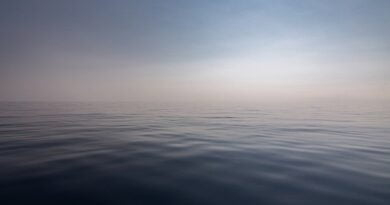India’s Arctic Policy
Context:
The Government of India has released India’s Arctic policy titled “India’s Arctic Policy: Building a Partnership for Sustainable Development” recently.
Highlights of the Arctic Policy
- India’s Arctic policy aims to promote the following agenda—
- Institutional and human resource capacities will be strengthened within Government and academic, research and business institutions.
- Inter-ministerial coordination in pursuit of India’s interests in the Arctic.
- Enhancing understanding of the impact of climate change in the Arctic on India’s climate, economic, and energy security.
- Contributing better analysis, prediction, and coordinated policymaking on the implications of ice melting in the Arctic on India’s economic, military and strategic interests related to global shipping routes, energy security, and exploitation of mineral wealth.
- Studying linkages between polar regions and the Himalayas.
- Deepen cooperation between India and countries of the Arctic region under various Arctic forums, drawing expertise from scientific and traditional knowledge.
- Increase India’s participation in the Arctic Council and improve understanding of the complex governance structures in the Arctic, relevant international laws, and geopolitics of the region.
- India’s Arctic policy would play an essential role in preparing the country for a future where humankind’s biggest challenges, such as climate change, can be addressed through collective will and effort.
- India’s Arctic policy lays down six pillars:
- Strengthening India’s scientific research and cooperation,
- Climate and environmental protection,
- Economic and human development,
- Transportation and connectivity,
- Governance and international cooperation, and
- National capacity building in the Arctic region.
- Studying linkages between polar regions and the Himalayas.
- Deepen cooperation between India and countries of the Arctic region under various Arctic forums, drawing expertise from scientific and traditional knowledge.
- Increase India’s participation in the Arctic Council and improve understanding of the complex governance structures in the Arctic, relevant international laws, and geopolitics of the region.
- Implementing India’s Arctic policy will involve multiple stakeholders, including academia, the research community, business, and industry and shall define timelines, prioritize activities and allocate requisite resources.
- The National Center for Polar and Ocean Research (NCPOR) in Goa, an autonomous institute under the Ministry of Earth Sciences, is the nodal institution for India’s Polar research programme, which includes Arctic studies.
- The policy documents the history of India’s relationship with the region, which can be traced back to February 1920, when it signed the Svalbard treaty in Paris.
- In 2007, India launched its first scientific expedition to the Arctic.
- Since then, India has been able to set up an observatory in Kongsfjorden as well as an atmospheric laboratory at Grove Badet.
- Since 2013, India has been an Observer nation in the Arctic Council, where it has consistently participated in meetings of Senior Arctic Officials and contributed to its six Working Groups.
- Under the banner of science and research, the Indian government hopes to build its research capabilities in the region by strengthening existing facilities, such as the Himadri Arctic station in Svalbard.
- It also hopes to align Indian research with international Arctic priorities. The policy further lays down plans to deploy space technology to better study the Arctic region.
Significance of India’s Arctic policy
India has so far sent 13 expeditions to the Arctic since 2007 and runs 23 active science projects. About 25 institutes and universities are currently involved in Arctic research in India and close to a hundred peer-reviewed papers have been published on Arctic issues since 2007 according to the Ministry of Science and Technology.
The Arctic region is significant due to the shipping routes that run through it. According to an analysis published by the Manohar Parrikar Institute for Defence Studies and Analyses, the adverse effects of the Arctic are impacting the availability of mineral and hydrocarbon resources, as well as transforming global shipping routes.
India can also play a constructive role in securing the stable Arctic. The region holds immense geopolitical importance as the Arctic is projected to be ice-free by 2050 and world powers making attempts to exploit the region rich in natural resources.
India and the Arctic – A History of Cooperation
- India’s engagement with the Arctic started in February 1920, when it signed the Svalbard Treaty in Paris.
- India has ratified almost all international treaties and is a member of international organisations that are relevant to the Arctic.
- Expeditions:
- India launched its first scientific expedition to the Arctic in 2007 to initiate a series of baseline measurements in biological sciences, ocean and atmospheric sciences and glaciology.
- Subsequently, the Indian research station Himadri at the international Arctic research base at Ny-Ålesund in Spitsbergen, Svalbard was dedicated to the nation in 2008.
- In 2016, India’s northernmost atmospheric laboratory was established at Gruvebadet.
- Other involvements
- Indian researchers are also monitoring arctic glaciers for their mass balance and comparing them with glaciers in the Himalayan region.
- India has also been actively involved in studies related to the Arctic oceanography, atmosphere, pollution and microbiology.
- Since becoming an Observer nation in the Arctic Council in 2013, India has been actively participating in meetings of Senior Arctic Officials and contributing to the six Working Groups of the Arctic Council.
- India’s engagement with the Arctic region has been consistent and multidimensional. The country maintains that all human activity should be sustainable, responsible, transparent, and based on respect for international laws.
- Benefits /Opportunities:
- India’s interests in the Arctic are scientific, environmental, economic as well as strategic.
- It is for this reason that India’s engagement with the Arctic region over the decades has been consistent and multi-dimensional.
- India believes that any human activity in the fragile region should be sustainable, responsible and transparent, based on respect for international laws, including UNCLOS.
- Melting Arctic ice also opens up new opportunities like energy exploration, mining, food security, and shipping.
- India is the third-largest energy-consuming country in the world, the third-largest oil importer (83 per cent) and the fourth-largest importer of gas which caters to almost half of the total gas consumption.
- India’s gas mix in the energy basket amounts to only 6 per cent, which is among the lowest in the world, compared to the world average of 24 per cent.
- This is targeted to be scaled up to 15 per cent by 2030.
- The Arctic can therefore potentially address India’s energy security needs and deficiency of strategic and rare earth minerals.
- India’s interests in the Arctic are scientific, environmental, economic as well as strategic.
Way forward
The ‘Arctic Policy’ document unveils that India aspires to have a permanent presence, more research stations, and establish satellite ground stations in the Arctic region.
Within the council, India can call for the reduction of industrial methane and carbon black emissions and alleviate their disastrous impact on Arctic environments.
This call fits well with the Council’s Arctic Contaminants Action Program as well. India can partner with other observer nations to formulate a strategic Asian Hydrogen Energy Technology Plan.
This plan can focus on sharing hydrogen fuel and energy technologies that can support transportation, chemicals, fertilizers, electricity generation, and oil refining industries.
Also, India’s leadership of the International Solar Alliance can help countries generate the cleanest green hydrogen using solar energy, reinstating India’s commitment to secure its energy and trade interests in the Arctic region by respecting internationally amenable environmental safeguards.
The Arctic region-
- The Arctic is the northernmost region of Earth.
- Most scientists define the Arctic as the area within the Arctic Circle, a line of latitude at 66.5° north of the Equator.
- Within this circle are the Arctic ocean basin and the northern parts of Scandinavia, Russia, Canada, Greenland, and the U.S. state of Alaska.
- Apart from being rich in mineral and oil resources, the Arctic region is also particularly significant due to the many shipping routes that run through it.
Arctic Council-
- It is a high-level intergovernmental forum to promote cooperation, coordination, and interaction towards sustainable development and environmental protection in the Arctic.
- It was formally established in 1996.
- All Arctic Council decisions and statements require consensus of the eight Arctic States.
- Only states with territory in the Arctic can be members of the council.
- The member states consist of Canada, Denmark(representing Greenland), Finland, Iceland, Norway, Russia, Sweden and the United States.
- The Ottawa Declaration defines these states as Members of the Arctic Council.
- The Council’s Strategic Plan 2021-2030 guides its work towards the Arctic as a “region of peace, stability and constructive cooperation, that is a vibrant, prosperous, sustainable and secure home for all its inhabitants, including Indigenous Peoples, and where their rights and wellbeing are respected.”

Source: Indian Express
You can find many articles on INTERNATIONAL RELATION (part of GS II) in our website. Go through these articles share with your friends and post your views in comment section.



